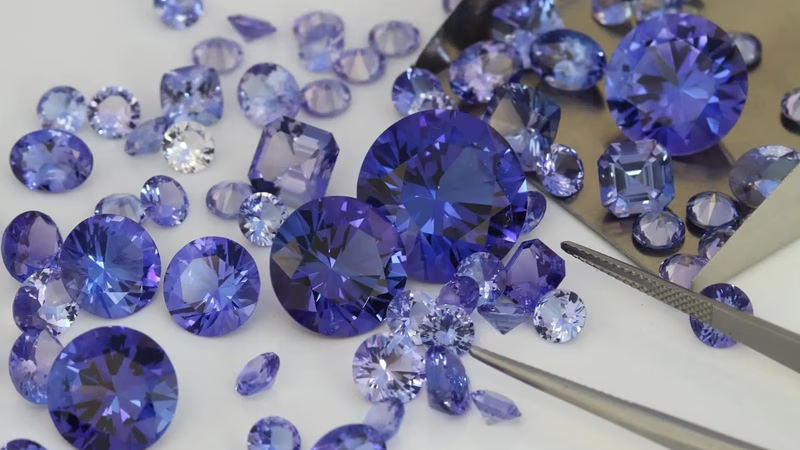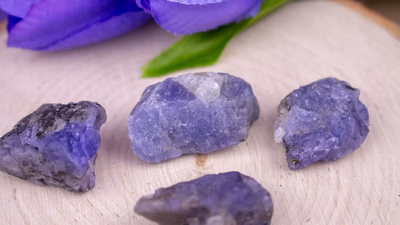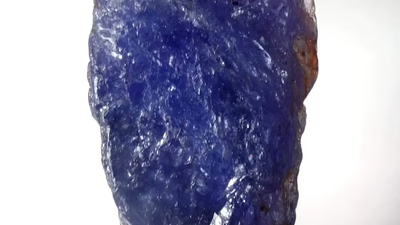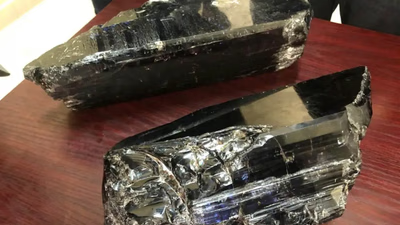
Authentic tanzanite stones showcase vibrant colors and clarity.
The most prized tanzanite stones exhibit a deep, vibrant blue or violet color. Lesser quality stones may appear pale or have a brownish tint. Tanzanite displays different colors when viewed from different angles (typically blue, violet, and burgundy). A good-quality stone will show strong pleochroism. Look for stones with minimal to no visible inclusions. High clarity tanzanite is more valuable. The stone should be transparent, allowing light to pass through without significant obstruction. A well-cut tanzanite will have good symmetry and proportions, enhancing its color and brilliance. Popular cuts include oval, cushion, and round, but any shape can be chosen based on personal preference.
By considering the factors of color, clarity, cut, carat weight, and ensuring proper certification, you can make an informed and confident purchase. Additionally, familiarizing yourself with the methods of identifying authentic tanzanite will help in distinguishing genuine stones from imitations. Larger stones are generally more valuable, especially if they maintain good color and clarity. However, quality should not be sacrificed for size. Ensure the tanzanite comes from reputable sources. Tanzanite is only found in Tanzania, so verify its origin. Purchase tanzanite that comes with a certificate from a respected gemological laboratory (e.g., GIA, AGS). This certifies the stone’s authenticity and quality.
Tanzanite is a gemstone with a hardness of 6 to 7 on the Mohs scale and has a range of blue-violet color from light to dark, and blue-purple and pure blue. To improve it, the heating method is used, in the field of this gem, stones with deep and bold color are the most valuable; But this color can only be seen in stones weighing more than five carats. The weight of the stone is an important point in the cutting process. When a tanzanite gemstone is purchased, the stone should appear completely clear to the eye. Tanzanite has an attractive glassy luster. Flaws that can be seen with the naked eye reduce the value of this stone, except in some very rare cat's eye tanzanites, where the presence of flaws causes the phenomenon of variable brilliance.
Before purchasing a tanzanite gem, it is important to remember that tanzanite measures between 6 and 7 on the Mohs scale and is therefore not a particularly hard stone. As such, tanzanite can be more prone to scratching and damage, and as a result may not be the most suitable stone for everyday ring wear. If you decide to buy tanzanite, use a 10x loupe to check for cut, clarity, and any chips or cracks. It is also recommended to compare a number of stones to measure color and color saturation. By following these short steps, you can better ensure that you end up with a good quality tanzanite specimen.
Use a jeweler’s loupe to inspect for natural inclusions. Complete absence of inclusions may indicate a synthetic stone. Rotate the stone under different lighting conditions. Genuine tanzanite will show different colors (blue, violet, burgundy) depending on the viewing angle. Under ultraviolet (UV) light, genuine tanzanite may exhibit a soft glow. Synthetic stones might not show this reaction. Most tanzanite is heat-treated to enhance its color. Untreated tanzanite is rare and may have a different value. A gemological report can confirm the presence or absence of heat treatment. Tanzanite has a specific refractive index range (1.69 to 1.70). A gemologist can measure this to confirm authenticity. Ensure the stone comes with a certificate from a reputable gemological laboratory. This document will confirm the stone’s identity, quality, and any treatments it has undergone.
-

Tanzanite stones are valued for their vibrant blue and violet hues, with high-quality specimens exhibiting strong pleochroism and minimal inclusions. The clarity, cut, carat weight, and certification from reputable gemological laboratories are crucial factors in determining the stone"s value. Authentic tanzanite is exclusively sourced from Tanzania, making verification of origin essential. Larger stones with deep colors are generally more valuable, but quality should not be compromised for size. The gemstone"s hardness ranges from 6 to 7 on the Mohs scale, indicating it may be prone to scratches and damage, which makes it less suitable for everyday wear. Buyers should inspect tanzanite using a jeweler’s loupe to check for clarity and any visible flaws. Comparing multiple stones can help assess color saturation and quality. Genuine tanzanite displays different colors under varying lighting conditions and may exhibit a soft glow under UV light.
Most tanzanite is heat-treated to enhance color; untreated stones are rare and can have different values. A gemological report is essential for confirming authenticity and detailing any treatments the stone has undergone.
-

Tanzanite is a unique blue to violet gemstone, a variety of zoisite, discovered in Tanzania"s Mererani Hills. Its striking color can change based on crystal orientation and lighting, a phenomenon known as pleochroism. First found in 1967 by a Maasai tribesman, tanzanite gained popularity through Tiffany & Co. , which named it after its origin. The gemstone"s rarity stems from its exclusive source, making it highly desirable. With a hardness of 6. 5 to 7 on the Mohs scale, tanzanite is somewhat vulnerable to scratches and requires careful handling. Most stones available today are heat-treated to enhance their color, which ranges from brownish to greenish before treatment.
The value of tanzanite is determined by its color, clarity, cut, and carat weight; deep blue or violet stones without inclusions are the most sought after. Despite being relatively new to the market compared to other gemstones, tanzanite"s unique beauty and limited availability contribute to its growing popularity. "
-

Tanzanite is a unique gemstone known for its captivating blue and violet hues, which can vary based on viewing angles due to its pleochroic nature. The most sought-after color is deep blue, with larger stones exhibiting more intense shades. Violet tanzanite, while also valued, is less popular than the blue variety. Green tanzanite, or "chrome tanzanite," is rarer and less valued compared to its blue and violet counterparts. Untreated tanzanite can show brown or yellow hues but is often heat-treated to enhance its appeal. The gemstone"s origins trace back to Tanzania, where it was first discovered and named by Tiffany & Co. in the 1970s. The market primarily consists of heat-treated stones due to their vibrant colors, while untreated stones are prized by collectors for their rarity.
Cat’s Eye tanzanite features a unique optical effect resembling a cat"s eye and is highly sought after despite its rarity. Bi-color tanzanite displays two distinct colors within the same stone, making it particularly appealing to collectors. Understanding the various types of tanzanite and their market values can help buyers appreciate this remarkable gemstone"s full spectrum. "
-

The value of tanzanite is determined by factors such as color, clarity, cut, carat weight, and certification. The most sought-after tanzanite displays a deep blue or violet-blue hue, with high color saturation significantly enhancing its value. Clarity is crucial; eye-clean stones are more valuable than those with visible inclusions. The quality of the cut also affects the stone"s brilliance and overall appeal. Larger tanzanite stones tend to be more valuable, especially if they maintain good color and clarity. Certification from reputable gemological laboratories can increase market value due to verified authenticity. Tanzanite is rarer than diamonds but generally costs much less, with prices ranging from $200 to $2,000 per carat based on quality. Market demand and supply limitations from its exclusive mining location in Tanzania further influence pricing dynamics.
Retail prices often include markups compared to wholesale prices, making it essential for buyers to purchase from reputable sources. "
-

Tanzanite is exclusively found in a small region of northern Tanzania, specifically near the Mererani Hills in the Simanjiro District. This area, approximately 7 kilometers long and 2 kilometers wide, is close to Arusha and Kilimanjaro International Airport, making it relatively accessible. The gemstone"s rarity stems from its limited geographic range, contributing to its high value. As resources diminish due to excessive extraction, prices are expected to rise significantly over the next 20 to 25 years. The Great Rift Valley, which stretches from Syria to Mozambique, plays a crucial role in the geological formation of tanzanite through volcanic activity and tectonic movements. The Tanzanian government has divided mining operations into four blocks, with large operators controlling two blocks while local miners work the others. Mining conditions are challenging due to depth and rock hardness, requiring both artisanal and commercial extraction methods. Tanzanite exhibits strong pleochroism, displaying different colors from various angles, typically blue, violet, and burgundy hues.
Most stones undergo heat treatment to enhance their color. "





